





Most of us have heard of clematis, morning glory, and passion flower vines, but have you ever heard mention of the Nong Nooch Vine? With so many easy to grow, exotic and beautiful vines out there, no one has an excuse to grow run-of-the-mill climbers in their gardens. Here is a list of 10 vines you should get acquainted with.
(Editor's Note: This article was originally published on March 10, 2008.Your comments are welcome, but please be aware that authors of previously published articles may not be able to respond to your questions.)
Exotic Love Vine (Ipomoea lobata)
This plant is known by many names including Exotic Love Vine, Firecracker Vine, and Spanish Flag Vine. The most striking feature of this vigorous climber is the unusual flower spikes. The tubular flowers open along a 6- to 8-inch raceme ranging in color from bright yellow to fire red.
Seeds, which are readily available online, are easy to start. Scarification and soaking over night can help with germination. Flowers are produced in the first season from seed, so why not try out this stunning vine?
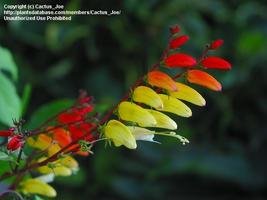
Corkscrew Vine (Vigna caracalla)
Much confusion and controversy surrounds this beautiful, scented vine. Most of the confusion stems from its common name, Corkscrew Vine, by which at least one other popular vine goes (Phaseolus caracalla). Make sure when you look for this vine, you specify Vigna caracalla.
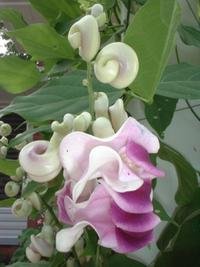
The beautiful flowers start out with a distinct snail shape in pale cream and open to a pale mauve and lavender bloom clusters. Corkscrew Vine thrives in warm and humid conditions, though it will grow well in drier climates, and can grow up to 20 feet high.
Pink Coral Vine (Antigonon leptopus)
This vigorous vine has beautiful pink or reddish sprays of blooms which appear from fall to frost. It is sensitive to frost but can survive into the mid-20s F. A native to Mexico, Coral Vine can grow up to 40 feet and needs a trellis or fence to support its fast growth [1].
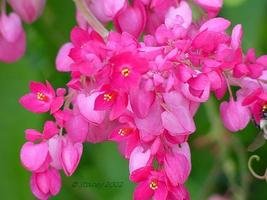
Coral Vine comes in several varieties from light pink to dark rose and is very attractive to hummingbirds and bees.[2] If you have an unsightly fence to cover, this prolific vine might be a good option.
Clock vine (Thunbergia mysorensis)
As the name suggests, Thunbergia mysorensis is native to Mysore, India and its surrounding area [3]. This striking vine has maroon flowers with yellow throats which appear abundantly over large, dark green leaves.
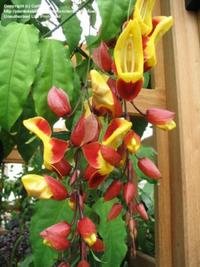
Clock vine is relatively easy to propagate from stem cuttings and by seed.
Bower Vine (Pandorea jasminoides)
This beautiful light pink stunner is a vigorous grower and flowers very freely. As most vines, it is tender to frost (hardy to zone 9) and it can do well in containers in cooler climates.[4]
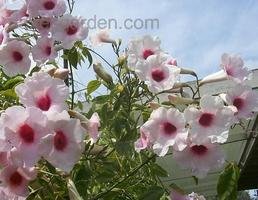
A native to Australia and a relative of Trumpet Vine, this vine is a beautiful addition to any butterfly or container garden.[5]
Yellow Butterfly Vine-Mascagnia macroptera
Yellow Butterfly Vine boasts beautiful, yet small, star shaped saffron blooms. However this vine gets its demonstrative name from the distinctly shaped seed pods. The pods, which start out chartreuse and turn a tawny brown, have two symmetrical "wings" on either side of the seed pod "body." When the pods are first ripening they are equally if not more striking than the bright yellow blooms.
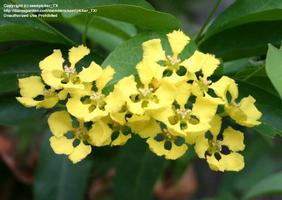
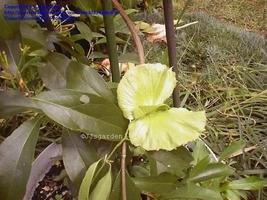
A native to Mexico, this plant thrives in warm climates and can be invasive if left unchecked.
Nong Nooch Vine (Petraeovitex bambusetorum)
This beautiful and less common vine has long, cascading yellow and cream blooms which take weeks to fully open. Nong Nooch Vine is visually very similar to Clerodendrums, such as Bleeding Heart, and is very suited to growing in containers.
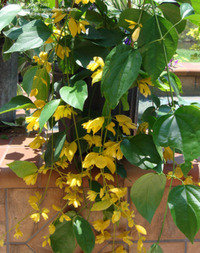
The Nong Nooch Vine gets its name from the world famous botanical garden Nong Nooch in Pattaya, Thailand (6).
Purple Bell Vine (Rhodochiton atrosanguineum)
Purple Bell Vine is a graceful, twining vine with heart-shaped leaves that is native to Mexico. Its blooms are deep purple and tubular with a lighter purple calyx.
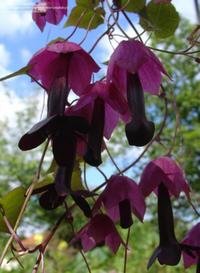
Growing to about 10 feet, Purple Bell Vine is short lived plant which is best grown from seed every year as an annual, since it blooms the first year.[7]
Cup and Saucer Vine (Cobaea scandens)
Cup and Saucer Vine gets its name from the delightful blooms it shows off in late summer. A mottled purple cup-shaped flower sits upon a saucer, the flower's lime green calyx. The foliage of Cup and Saucer vine is lush and deep green, a nice contrast to the flowers.[8]
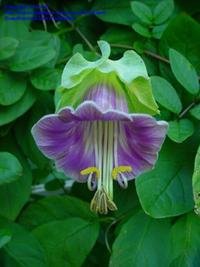
Seeds of this vine are more difficult to germinate than other vines but are readily available online.
Queen's Wreath (Petrea volubilis)
Queen's Wreath is a fast grower which puts out show stopping lacey sprays of violet blue orchid-like blooms. It is especially suited for hot and humid climates and blooms from April to August.[9]
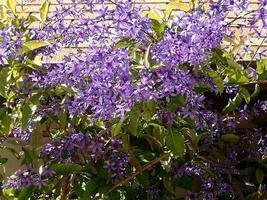
This is a sturdy vine that can be trained as a topiary, but is only hardy to zone 10, or maybe zone 9.
Photo Credits:
Exotic Love Vine- Cactus_Joe
Corkscrew Vine- Dave
Coral Vine- Htop, Floridian
Clock Vine Calif_Sue
Bower Vine- Clare_CA
Yellow Butterfly Vine- Seedpicker_Tx, JJsgarden
Nong Nooch Vine- KatG
Purple Bell Vine- wallaby1
Cup and Saucer Vine- Evert
Queen's Wreath- RWhiz
Sources:
1. http://cals.arizona.edu/pima/gardening/aridplants/Antigonon_leptopus.html
2. http://aggie-horticulture.tamu.edu/extension/newsletters/hortupdate/sep04/Coralvine.html
3. http://florawww.eeb.uconn.edu/acc_num/199900057.html
4. http://www.logees.com/prodinfo.asp?number=R1463-2
5. http://www.desert-tropicals.com/Plants/Bignoniaceae/Pandorea_jasminoides.html
6. http://www.toptropicals.com/html/toptropicals/plant_wk/petraeovitex.htm
7. http://www.rainyside.com/features/plant_gallery/vines/Rhodochiton_atrosanguineum.html
8. http://www.johnnyseeds.com/catalog/product.aspx?heirloom=1&item=1178
9. http://www.backyardgardener.com/plantname/pda_8de9-4.html
10. http://secure.cartsvr.net/catalogs/catalog.asp?prodid=4768313&showprevnext=1
Copyright © www.100flowers.win Botanic Garden All Rights Reserved